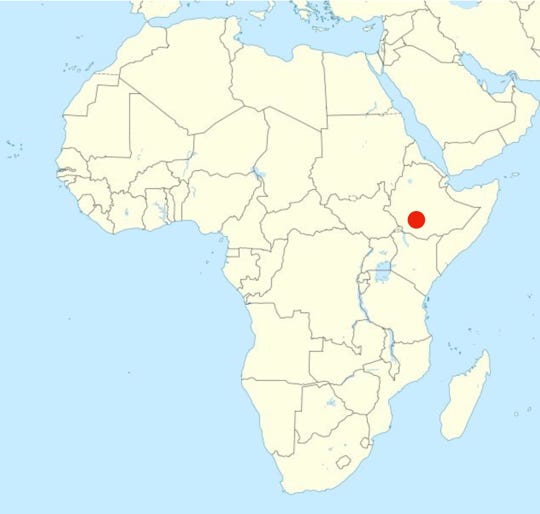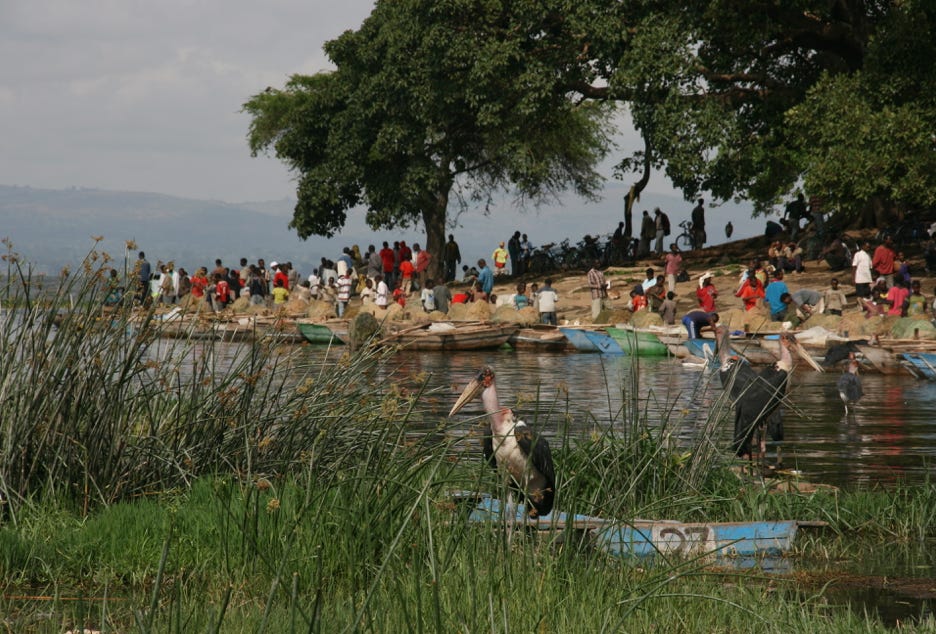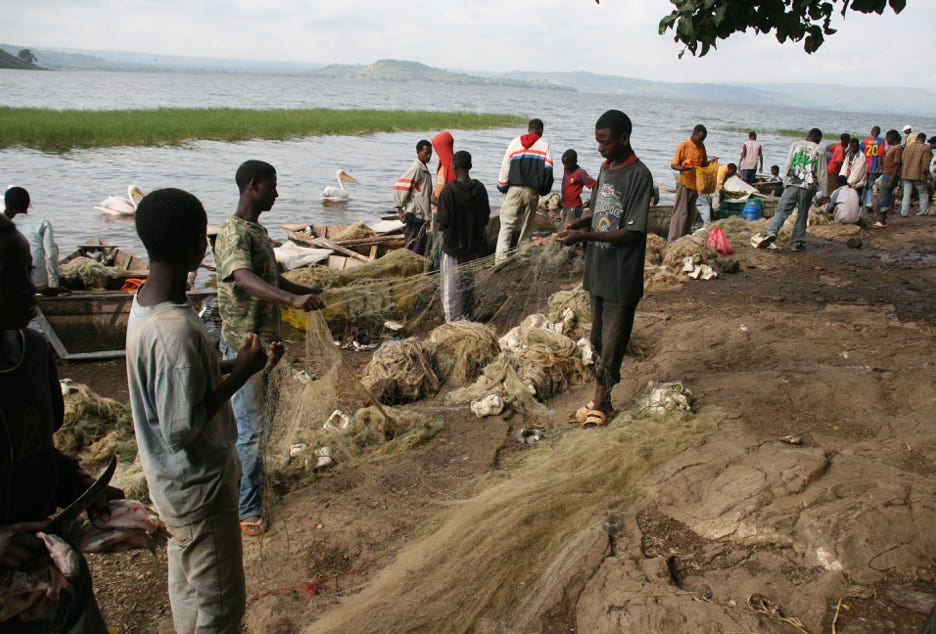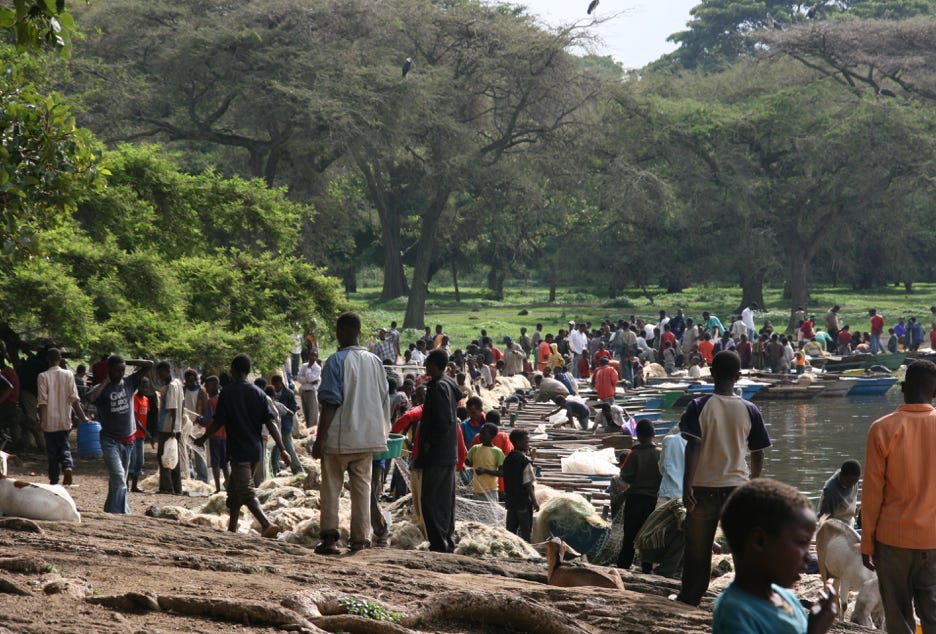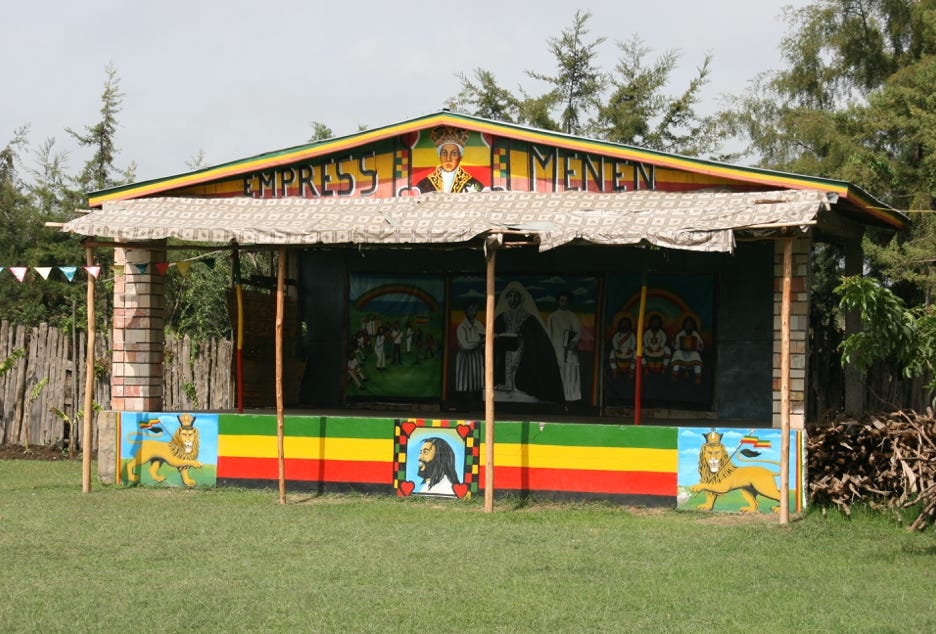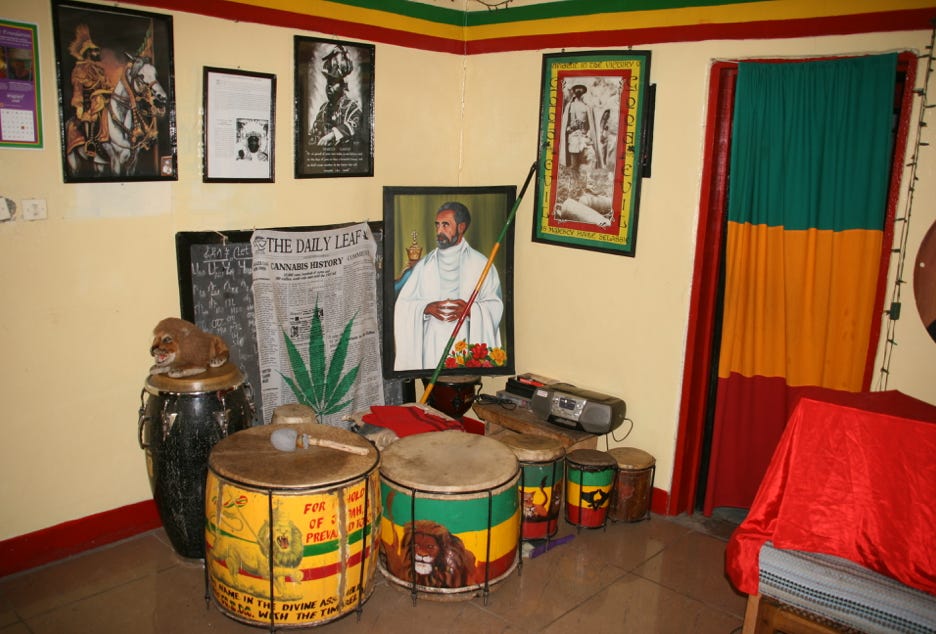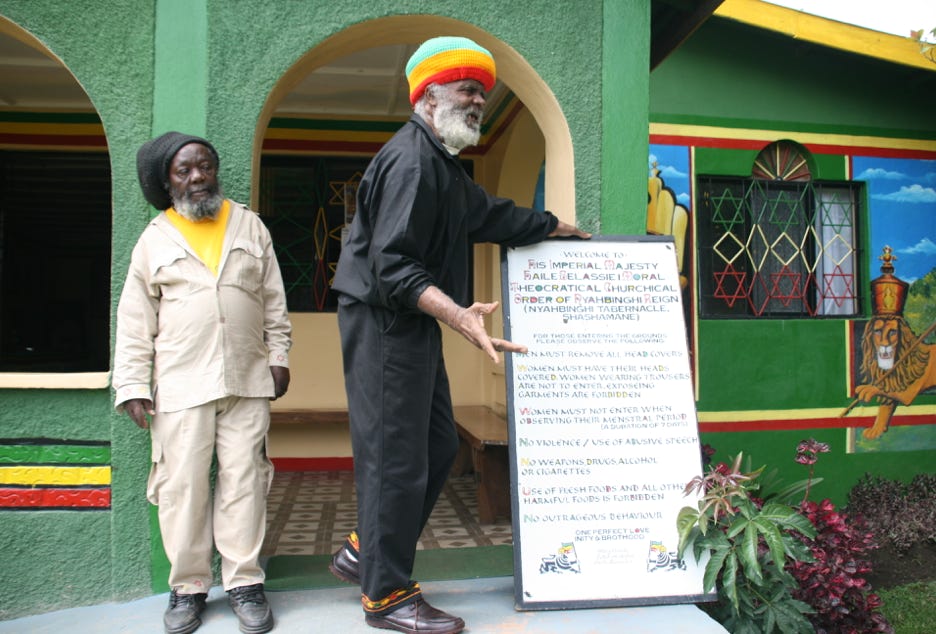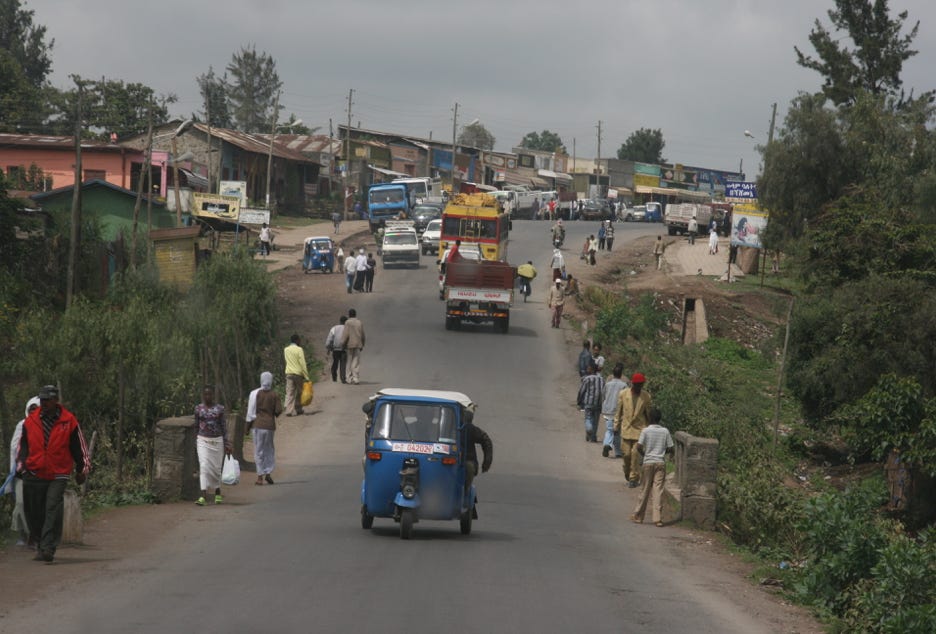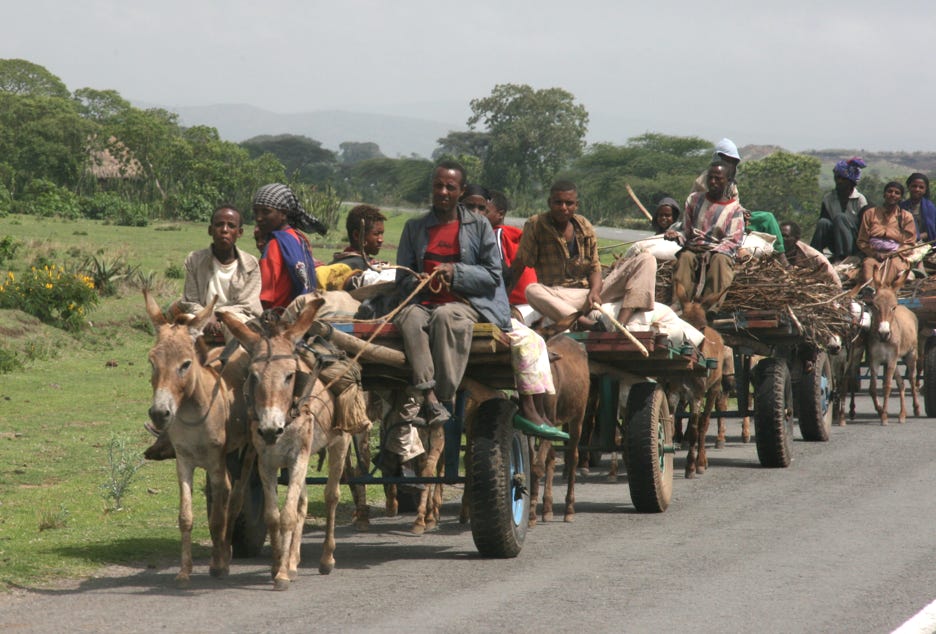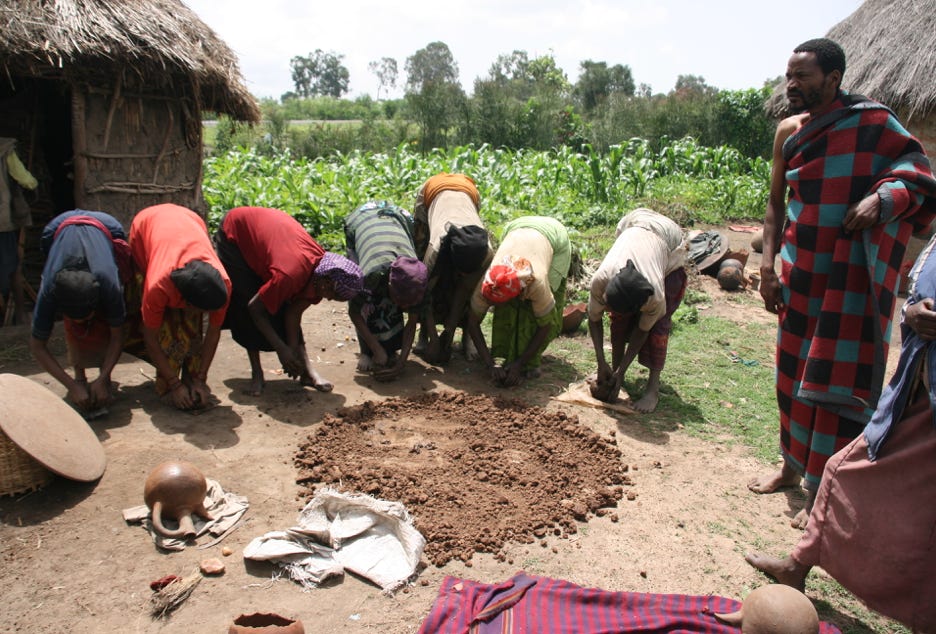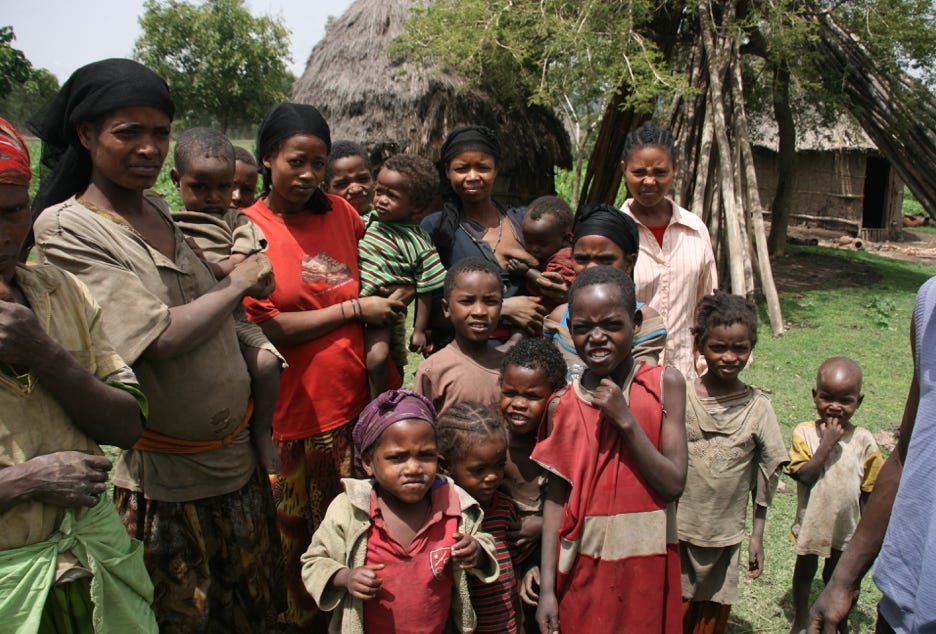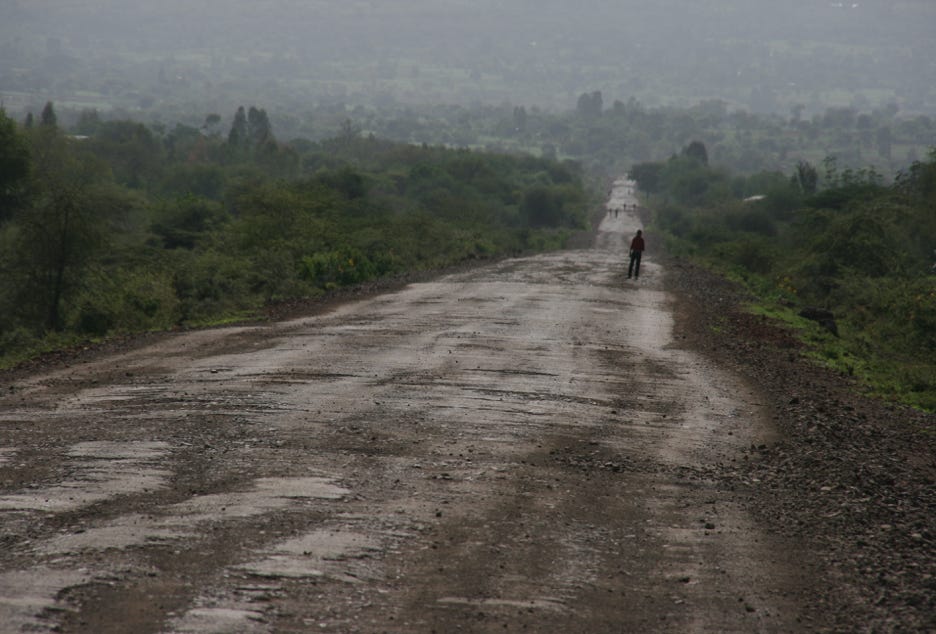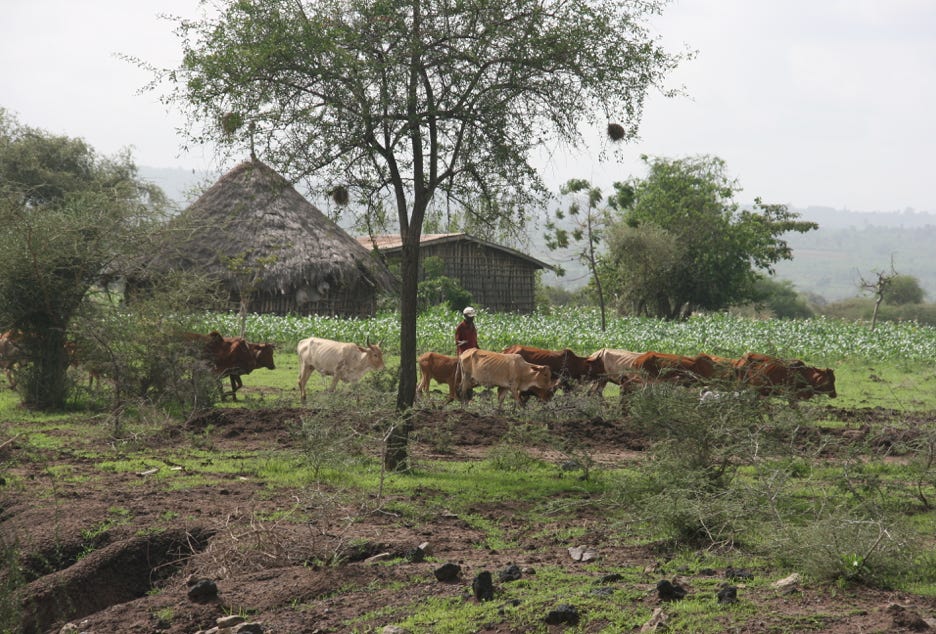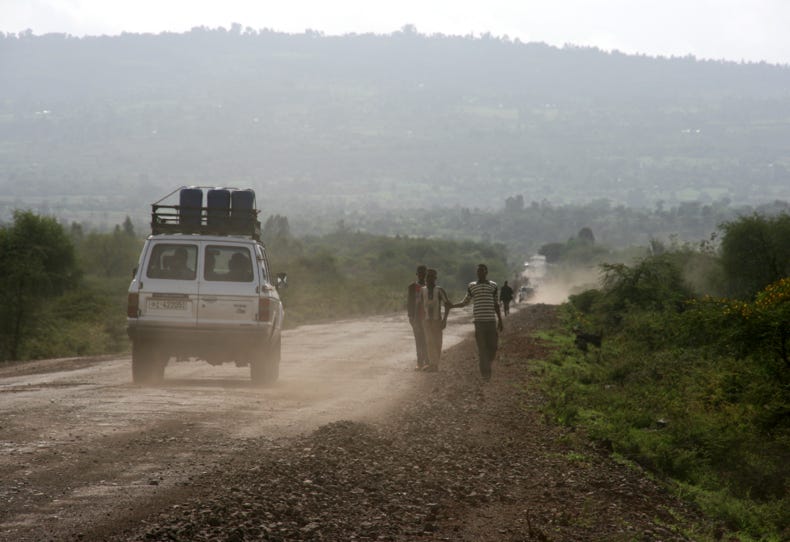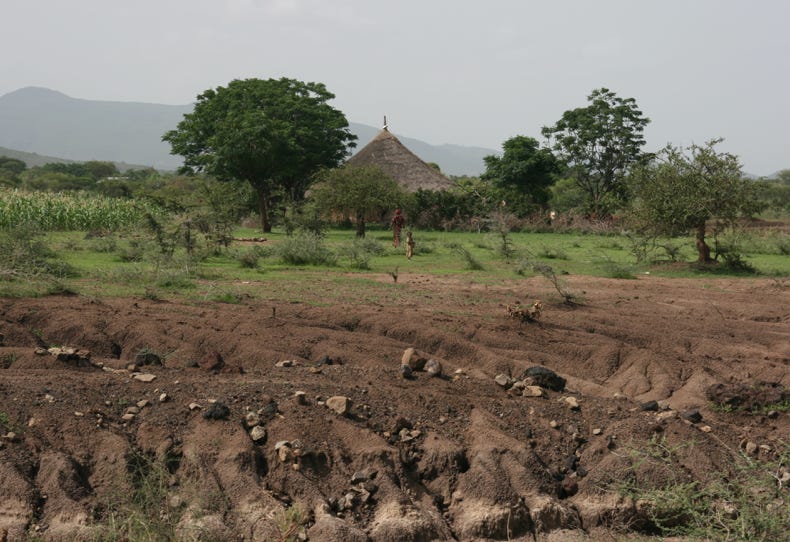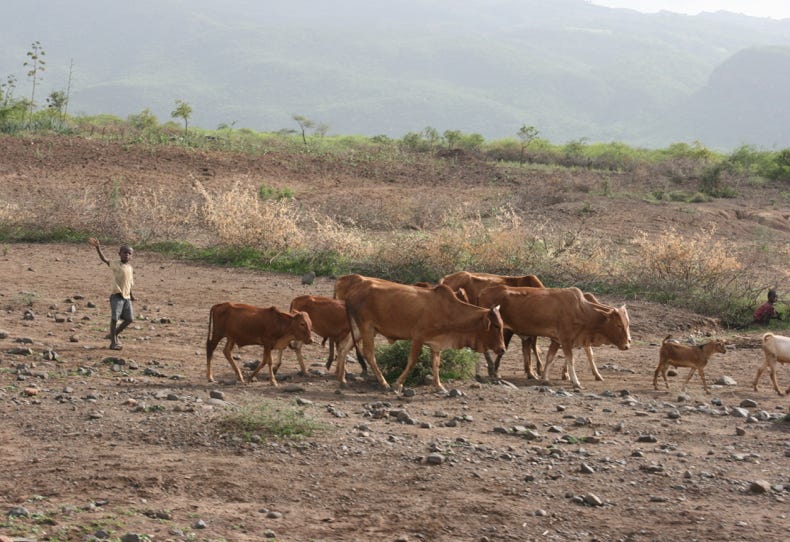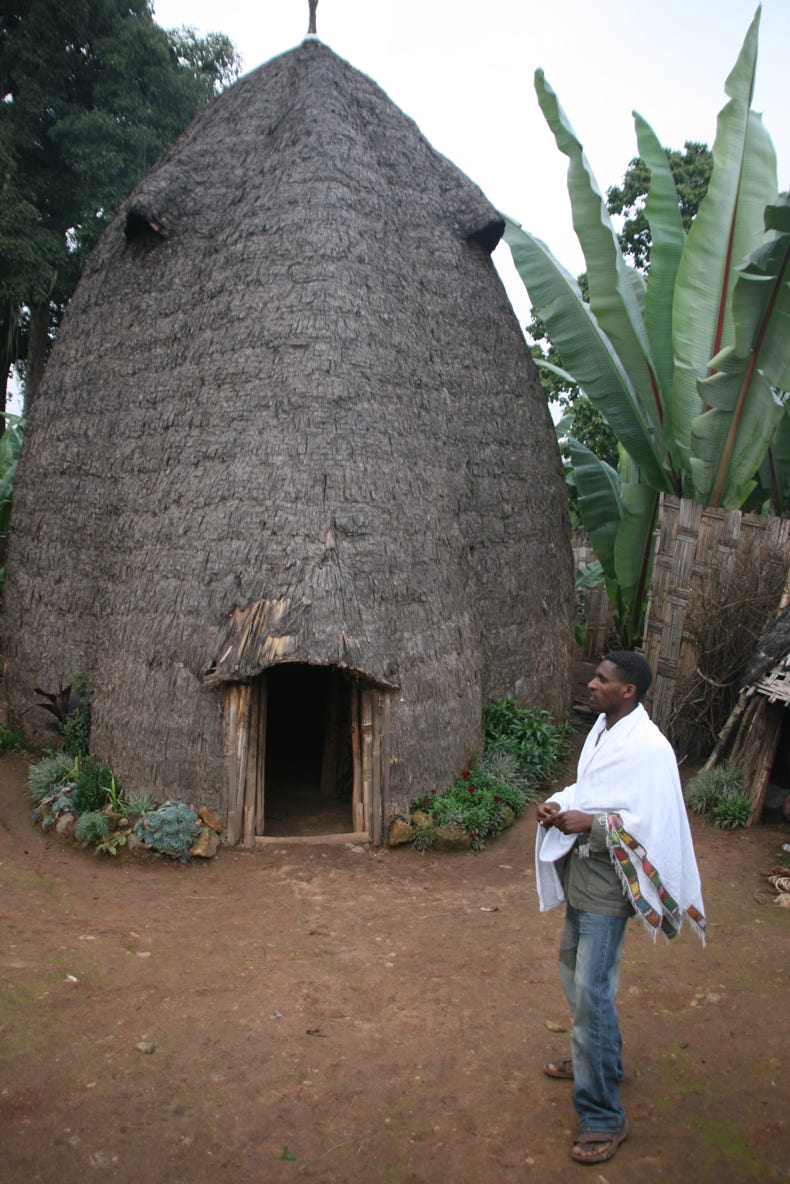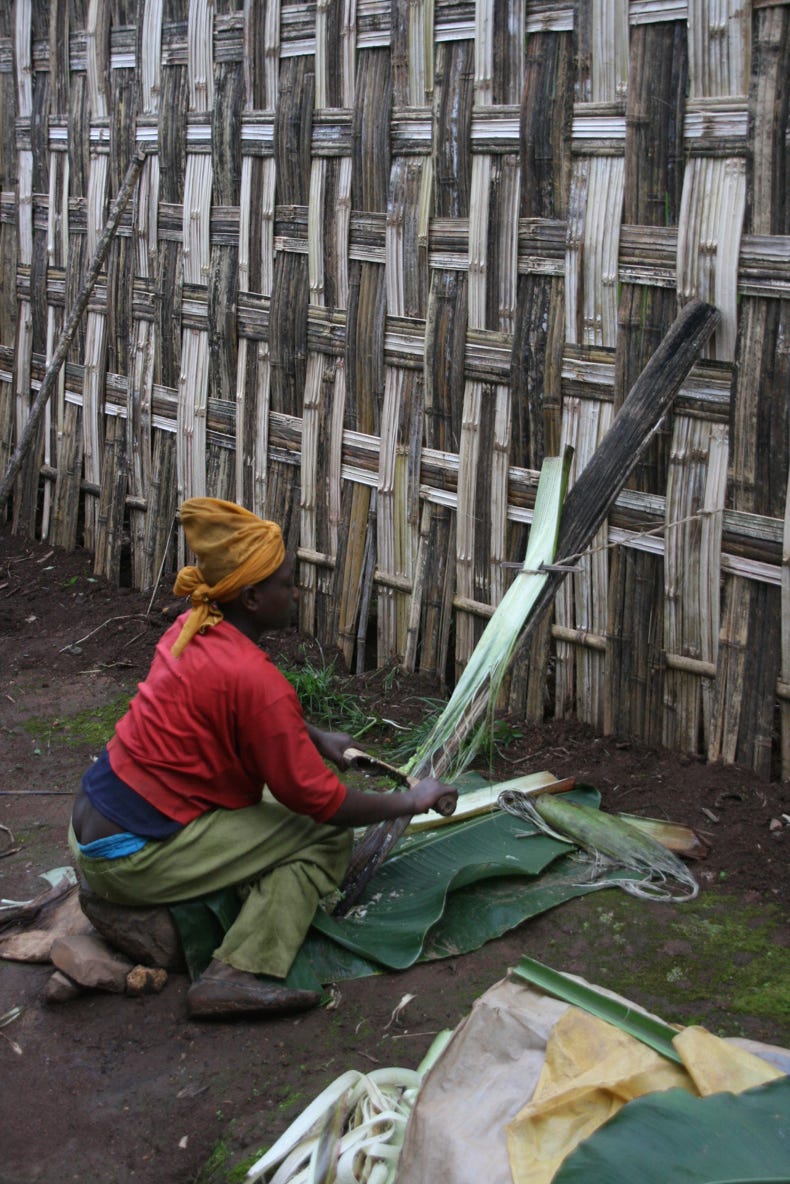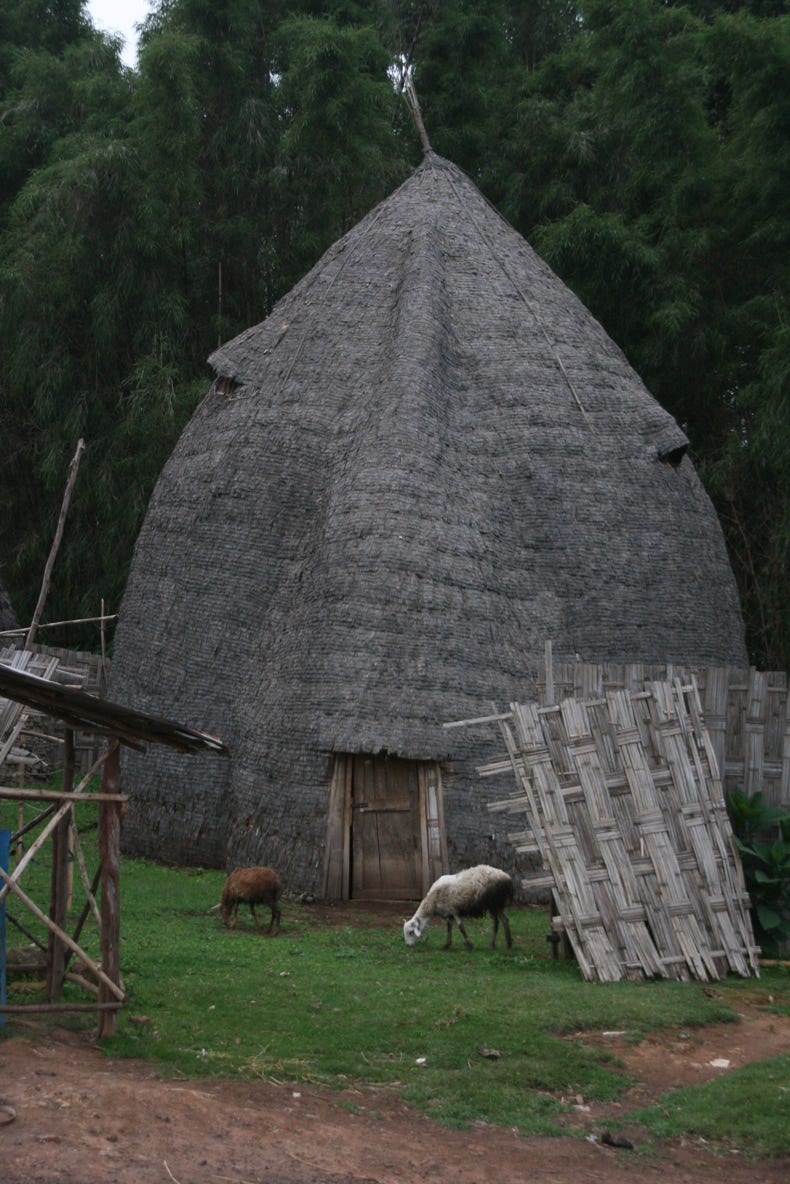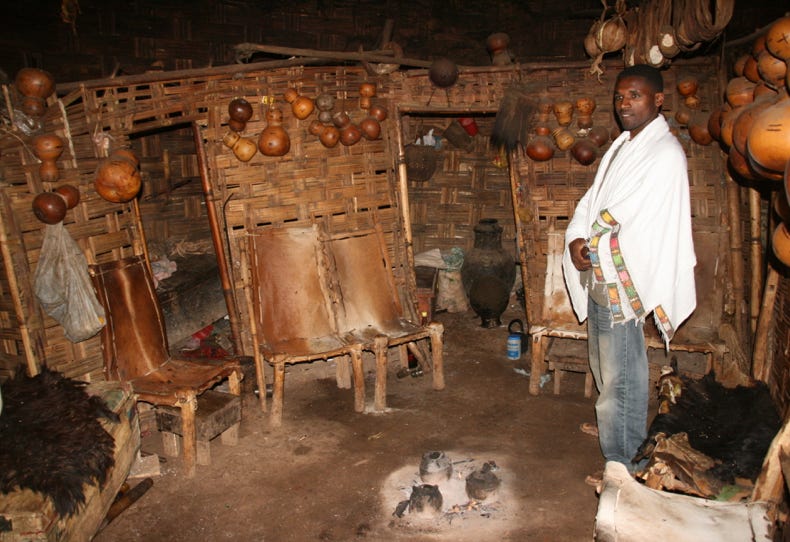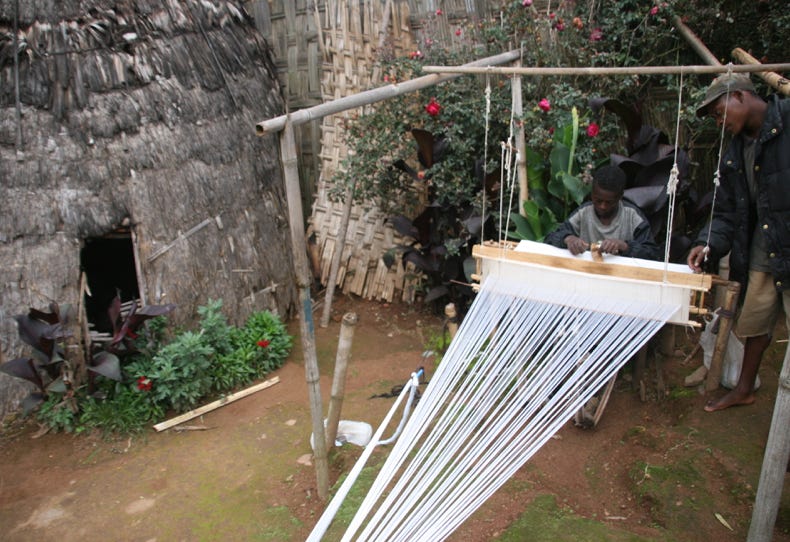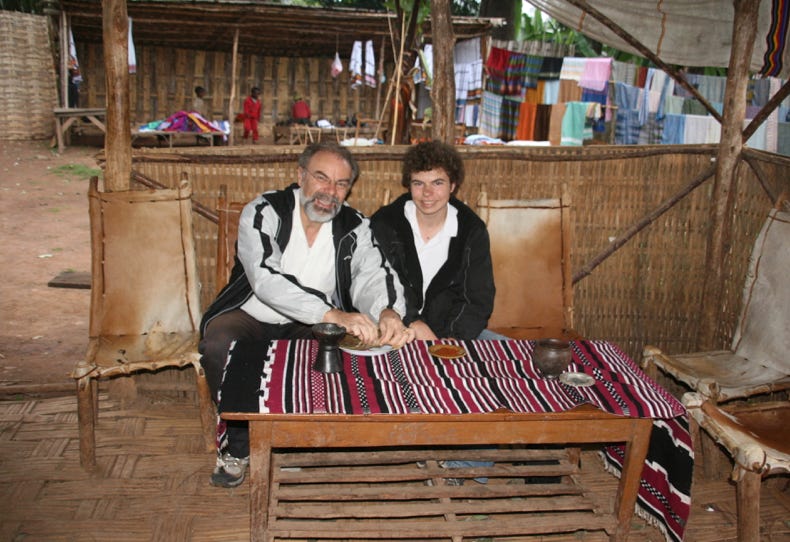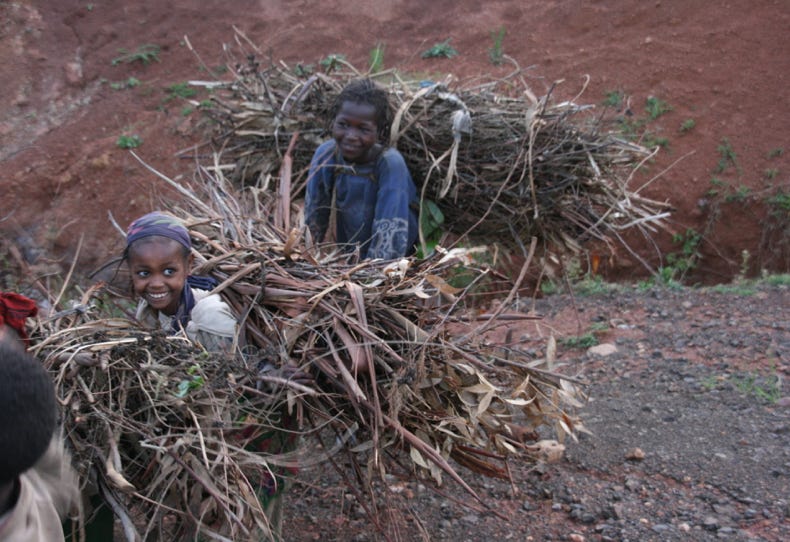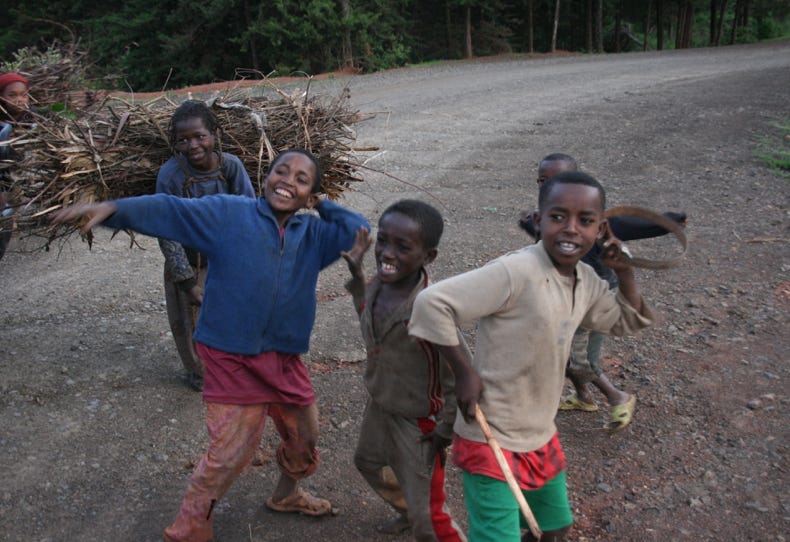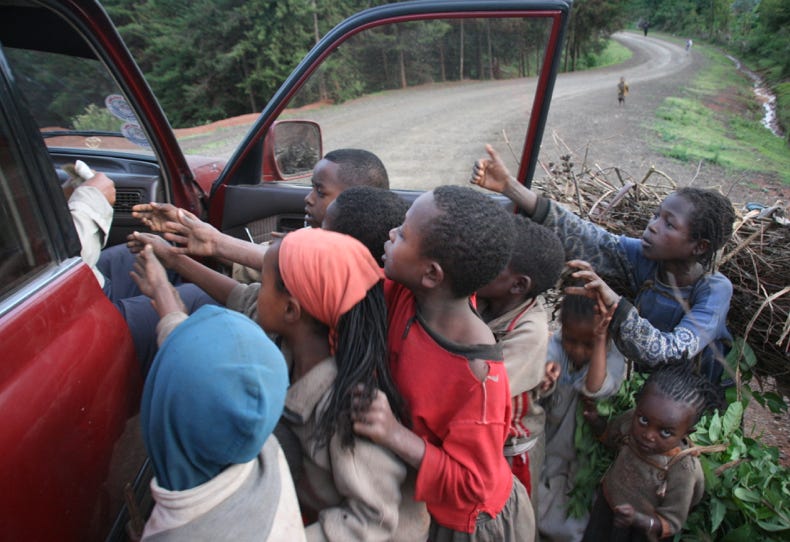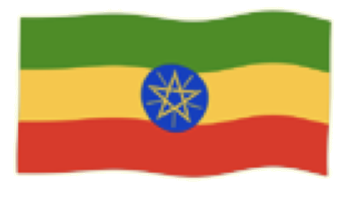

I thought that today would be largely a day of travelling, driving 270 kilometres south from Awasa to Arba Minch. I was right – it was a long day of travelling (leaving at 8:30 am and arriving at 7:30 pm), but it was also much, much more than this. With unexpectedly good weather and lots to see, I took more photographs today than on any previous day on the trip (387 in fact).
We had a great breakfast despite the continuing electricity blackout in Awasa, and then loaded up the 4WD. However, it took some time before we could get on out way because a group of long-tailed baboons had surrounded the car on overhead trees and aggressive actions on the part of our driver to chase them away only seemed to result in reciprocal hostility. It was quite a while before we could safely enter the vehicle.
Our first stop was the side of Lake Awasa where the fishermen were sorting through their overnight catch. Hundreds of people were there, untangling nets, cleaning fish, selling produce and just hanging around - I guess we fitted into this last category, together with the many waterbirds that were also attracted to the scene. It was simultaneously scenic, active, colourful and insightful, and it provided a great start to the day.
We set off on the highway, and the first town we came to was Shashemene. I had read the previous night that Shashemene is the centre of the Rastafarian movement in Ethiopia. Although Rastafarianism is more often associated with Jamaica and other Caribbean islands where slavery was once practised, the name comes from Ras Tafari, the name of Ethiopia’s Haile Selassie before he was crowned emperor in 1930. Haile Selassie made land available in Ethiopia – in Shashemene to be precise – to descendants of former slaves who wished to return to their African homeland. The Rastafarians thus treat him as a god. They have some interesting practices, such as refusing to eat some fresh foods such as pork, milk and coffee, but holding the smoking of marijuana as a holy sacrament. The Rastafarians are patiently awaiting the restoration of the Ethiopian monarchy.
I was interested to learn more about Rastafarianism, so we called in to one of the tabernacles and introduced ourselves to the priest in charge. He was everything one might imagine a Rastafarian might be (see photo to the left). Originally from Jamaica somewhat spaced out, and having no front teeth, he gave us an excellent introduction to Rastafarianism, including the importance of Bob Marley, the medicinal benefits of cannabis (“a God-given, natural medicinal plant”), the reasons why women should not wear make-up or try to look masculine in ways such as by wearing slacks instead of dresses, and above all, the supreme importance of Haile Selassie (who he said was the fulfilment of the prophesy in Revelation that Jesus would return to earth – he referred to Haile Selassie as ‘King of Kings and Lord of Lords’). It was fascinating insight into one of the world’s smaller and more obscure religions.
We made only one other stop before lunch, which was in a small village that specialised in pottery making. All the pottery was hand-made by the women for sale in the local markets. As might be expected, the process was extremely labour-intensive, and the quality of the finished products could best be euphemistically referred to as ‘individually hand crafted’.
We stopped in a middle-sized town called called Sodo for lunch before continuing to Arba Minch on a road that was deteriorating markedly in quality the further we went. Even more so than yesterday, there were diverse and interesting things to see every inch of the way. Today was obviously market day in several places that we passed, as long lines of mules carrying people and goods filled the highway as we approached (and left) each town that we came to. It was interesting to note that many of the settlements had signs identifying various projects (especially in the area of farming) as being sponsored by World Vision; the organisation seems to have quite a large presence in southern Ethiopia.
Even when we stopped for 10 minutes – seemingly in the middle of nowhere – so that the driver could talk on his mobile telephone to his brother in the US, there was plenty to see - some nearby huts, a herd of cattle being moved, some significant soil erosion, xerophytic plants beside the road, and the always fascinating passing traffic, both motor and animal propelled.
About 15 kilometres before we reached Arba Minch, we took a turnoff to climb 1000 metres (to an altitude of 2500 metres) up to the top of the cloud-covered Guge Mountains that rise directly above Arba Minch and the Rift Valley lakes. Our destination was a small village known as Dorze, inhabited by people of the tribe of the same name. The traditional architecture was as fascinating as it is unusual. At the entrance to each village compound was a large community house, 8 metres high and looking somewhat like an elephant from the front. The reason that it is built so high is that the area has termites that eat away the lower walls, and the building gradually loses height over the years as the termites do their work.
The community building has space for animals on one side, sleeping areas for people on the other, while in the middle there is a place for people to gather around a fire which, like the grass huts of the Dani in Irian Jaya, collects the smoke inside the hut for warmth as there is no chimney; the smoke slowly oozes upwards and outwards through the thatched roof. To the left of the community house was the honeymoon house, where newly married couples spend the first three months of their marriage. To the right of the community house was another small hut, outside which men and boys weave cloth that may only be worn by the men.
In the main section of the village, a woman was shredding the leaves of mock banana trees. The fibre is buried for three to four months, during which time it ferments. After that time, the resulting paste can be cut and pressed between banana leaves into a dough to make a type of flat bread called ‘enset’, which is prepared by cooking for about 5 minutes. Andy and I were invited to try some of the hot bread, which we did, finding it very tasty indeed - though it was perhaps more to our liking without the hot chilli paste that the local people spread on it.
The village we visited had made a fledgling entry into the ecotourism market, despite its extremely isolated location, by building half a dozen single and double-bedroom huts in the traditional style for visitors to stay. We were told that, on average, one car of guests comes each week or so.
One of the (very few) things that irritates me about travelling in Ethiopia is the widespread practice of children begging whenever they see a foreigner (and they can spot a foreigner at 500 metres!).
As there are so few tourists in this part of Ethiopia, I can only surmise that many of the aid workers with organisations such as the UN, FAO, WFP and UNESCO must be very free in the way they hand out money to children (which is hardly a great incentive to keep them in their classrooms so they receive an education!). Even in the most isolated villages, children of all ages will run up to a foreigner, waving, smiling and shouting “hello, hello, hello”, followed immediately by “money, money, money”.
Related to this issue, we had a very interesting experience while descending the hill back down to the road into Arba Minch. Many of the children were dancing in the middle of the road, singly or in groups, as they saw our car approaching. I would not say it was a very safe thing to do (rap dancing in the middle of a steep, dirt road is not something I would ever do!). On the other hand, it was perhaps a more pleasant way of asking for money than begging or shouting demands, although it still reflected the same ‘cargo cult’ mentality of chronic dependence.
As we descended the mountain from our visit to Dorze, we saw that even some of the children who were carrying heavy bundles of fuelwood were joining in the dancing – an amazing feat of energy when even carrying the fuelwood up the steep mountainside must have been a significant effort for a small child. We stopped and watched one group, and the children did put on quite a performance. Sadly, it was all in the expectation of a small payment. As there were about 10 children present, and the driver suggested I should pay 5 birr in total, I gave him the money to make sure it would be distributed fairly. At this moment, the dancing abruptly stopped and the event turned into a frenzy around the beleaguered driver, who just managed to handle the situation of the shouting and clamouring for cash with dignity and patience.
Our hotel in Arba Minch was the Bekele Molla Hotel, situated overlooking two of the Rift Valley lakes, Lake Abaya and Lake Chamo. The rooms were in semi-detached cabin style, quite large but also mosquito-infested and quite run-down. The atmosphere we encountered was not improved by the fact that the area was on its twice-weekly rostered blackout day. Andy had I had dinner on the hotel’s terrace overlooking the lakes by candlelight, together with the only other guest in the hotel, a history professor from Poland. The food was great despite the lack of power. Andy had minestrone followed by “stake” with “hot blak pappa sos”, whereas I had Hungarian soup followed by grilled Nile perch.
The power blackout lasted longer than anticipated. We were told that the power would return at 9 pm. It finally came on at a little after 10 pm, but last just 17 minutes before fading out into darkness again. The power finally came on at 2:30 am, but cut out again at just after 5:00 am. For that reason, preparing today’s diary entry has been quite some hassle, taking six attempts over two days. Hopefully the electricity will be a little more reliable tomorrow.
